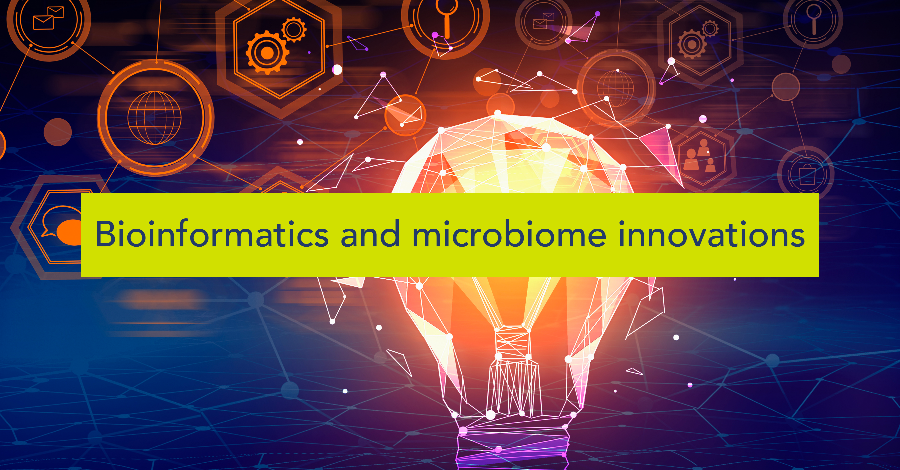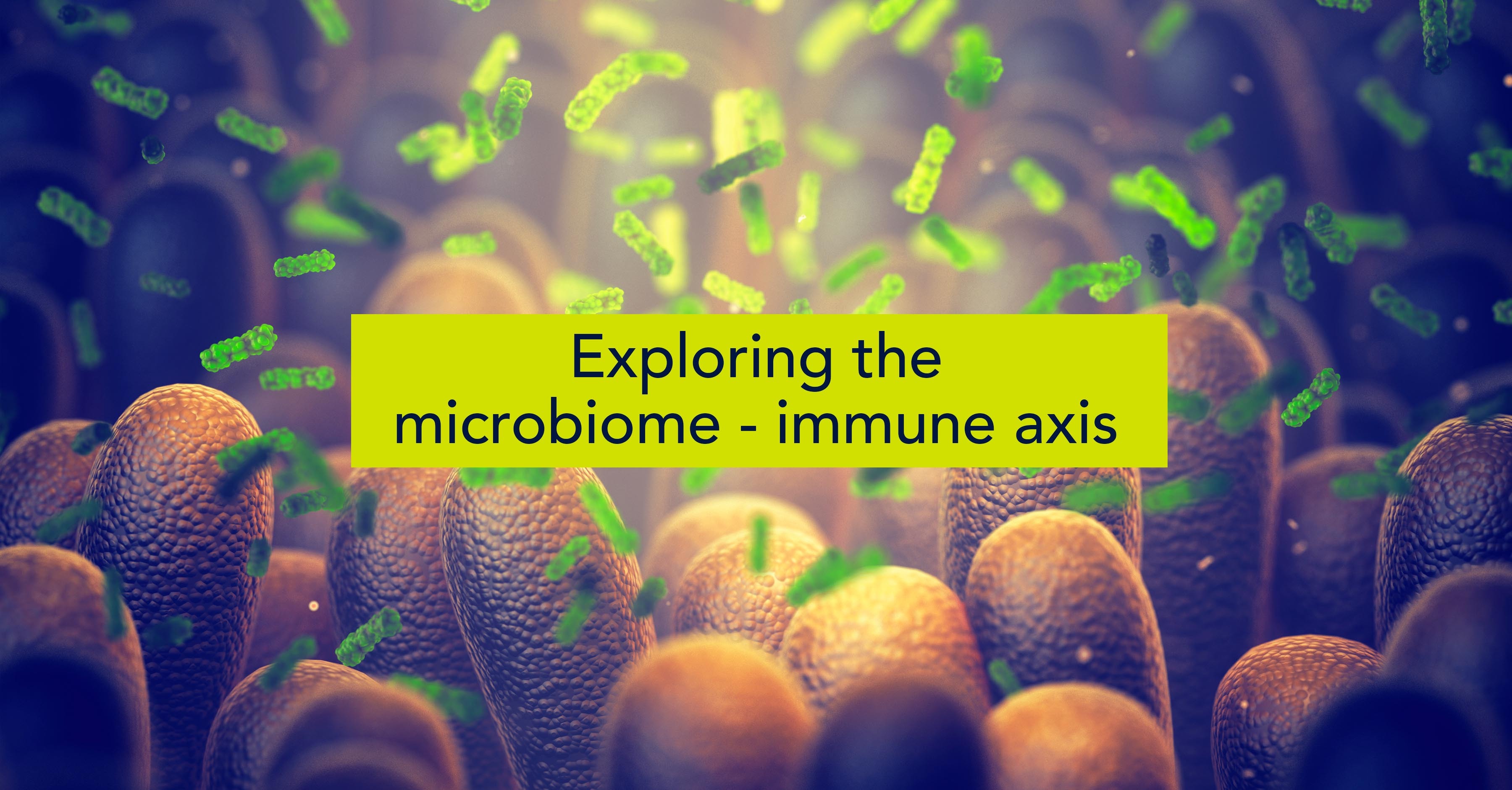Bioinformatics and Microbiome Innovations

The world is not only not on track to achieve its SDG 2 targets on either Zero Hunger or global nutrition by 2030, the situation, in fact, is even likely to deteriorate further due to the impact of the COVID-19 pandemic.
The challenges to global food security and nutrition keep piling up. By 2050, the demand for food will increase by 56% even as the cumulative impact of climate change cuts global agricultural yield by as much as 30%. At the same time, the short-term benefits of the green revolution are waning while its long-term consequences – such as land degradation, soil nutrient depletion, biodiversity loss, etc. – persist.
The global agriculture and food system requires a significant transformation with a long-term focus on efficiency, productivity, and sustainability. Agrigenomics – the application of modern genomics and bioinformatics tools to agriculture – may well be the best approach there is.
Bioinformatics in agriculture
Bioinformatics is already a priority in the discovery of innovative crop development, protection, and nutrition mechanisms, and in ensuring food and animal feed security and safety.
Agricultural bioinformatics has already been used successfully to enhance crop health, increase pest and disease resistance, and manage crop nutrients, to name just a few examples.
Comparative genomics has been used to identify mechanisms responsible for biotic resistance in plants and transfer these abilities to other food crops. This can help reduce or even eliminate the need for synthetic chemical treatments in agriculture. Similarly, genomics can also be used to enhance crop tolerance to abiotic stress.
Modern omics technologies help scientists understand the broad-spectrum nutrient composition of crops and enhance their nutrition quality to address the prevalent health issue of micronutrient malnutrition. For example, this process has been used successfully to increase iron, micronutrients, and vitamin A levels in rice.
There is a range of bioinformatics applications in agriculture, including metagenomics sequencing to study and manage soil toxicity, biodiversity informatics to holistically conserve biodiversity, and nutrigenomics to clarify the link between diet and health by analysing the influence of nutrients on gene expression.
But perhaps one of the most exciting and promising applications of bioinformatics in agriculture is in microbiome research – an interdisciplinary platform at the confluence of a number of fields, including agriculture, food science, biotechnology, mathematics (informatics, statistics, modelling), and plant pathology.
Microbiomes & the next green revolution
Crop microbiomes have been hailed as the critical lever for launching the next agricultural revolution in a world where all agriculture and food system resources are already stretched thin. If the previous green revolution, with its emphasis on chemical inputs and intensive farming practices, unbalanced crop-associated microbial communities, the next revolution will leverage insights into the composition, structure and functionalities of crop microbiomes to increase crop resistance, enhance plant health and growth, and create a sustainable model for agriculture and food production.
Plant, animal, soil, and water microbiomes play a critical role in the functioning of a balanced, productive and sustainable agroecosystem. A better understanding of the complex molecular interactions of these biomes can help us harness their innate capabilities to manage nutrient bioavailability, promote plant growth, improve resilience to environmental stress and disease, and create a productive and sustainable global agroecology with broader implications for environmental health, human health, and climate change mitigation.
Realising the expansive promise of microbiomes, however, hinges on our ability to decode the complex interactions between different microbes and interactions microbes and their hosts, and to holistically define the functionality of a plant microbiome ecosystem.
In order to build this holistic perspective of plant microbiome systems, there have been proposals for a holo-omics approach that blends plant-centric omics techniques – such as transcriptomics, metabolomics, epigenomics, and proteomics – with microbe-centric techniques, such as amplicon sequencing, shotgun metagenomics, metatranscriptomics, and exometabolomics.
Now, the accurate analysis of multimodal, multi-layered, heterogeneous, high-dimensional data from both host and microbiota domains requires an integrated approach to accommodate different data types under a unified inference framework – and that is a challenge for most conventional approaches. However, this is how the BioStrand SaaS platform overcomes it without compromising speed, accuracy or usability.
The Globachem approach to microbiome innovation
Globachem is a Belgium-headquartered privately-owned agrochemical company with a focus on the development of innovative “Inspired by Nature” crop protection products derived from plants, bacteria, fungi, and other organisms. The company pursues an aggressive new product innovation strategy to rival the multinationals by utilising a top-tier cross-functional network of internal talent and external partners, a well-defined agile innovation framework, and investments in the best technologies.
Where larger companies power through automated high-throughput screening of thousands of molecules to isolate potential targets, Globachem favours a more precision-guided approach to new product innovation based on three strategic principles: 1). Work with new, exclusive, non-typical sources rather than the mainstream libraries popular with the big players, 2). Implement an unambiguous, rational and relevant screening process, and 3). take a “Fail fast, learn fast” approach to refine the development process.
Globachem, in partnership with CSIC Madrid, recently launched a new project to develop a robust seed coating inoculant. The objective was to identify bacteria with fungicidal properties that also had the best chance of survival not only in the seed coating but also in sub-optimal soil conditions. And this is the small yet significant role that the BioStrand platform played in the development process.
In the first stage, the Globachem team tested 80 different bacterial strains for fungicidal properties before honing down to five potential targets. Using our platform’s mode of action capabilities simplified and accelerated the process of identifying multiple novel bacteria with fungicidal effects and with the potential to lead to novel fungicidal metabolites.
In order to develop more in-depth insights into the fungicidal functions of these bacteria, the team then used the BioStrand platform to establish MOA at the molecular level based on an analysis of conserved HYFTs™. With our platform, researchers were able to study protein models and identify relevant domains, transcription factor binding sites, enzymatic regions, sequences necessary for conformational changes, and gain more insights into crucial nucleotides.
The next phase of the project was to conduct a metabolic flux study to identify synergies in the bacteria to develop a more robust microbiome. This time-consuming phase involved sequencing and genome annotation for each potential target, the development of individual metabolic models for the bacteria that integrated into a global microbiome model, and biological testing in the lab. The objective was to look at metagenomics and discover insights into the bacterial communities in addition to all the information already available on each target.
Now, the lack of high-quality reference genomes is a common challenge in microbiome research, and in this case, the best reference genome that the Globachem team had had an overlap of 60%. However, the higher quality of annotations enabled by the BioStrand platform meant that the team was able to extract insights even about the unknown 40%. More importantly, the time-consuming sequence assembly and annotation step can be completely bypassed for any new bacteria that are added to the project. Instead, the research can proceed directly to the identification of variants to determine the best candidates to be integrated into the microbiome.
BioStrand - empowering biome innovation
The increasing demand for sustainable agricultural practices is expected to drive the growth of the agricultural microbials market at a CAGR of almost 13% to reach USD 9 billion in 2026, up from USD 3.9 billion in 2019.
Thus far, the lack of integrated solutions for holo-omics analysis has been one of the key obstacles to microbiome research. The BioStrand SaaS platform offers a unified computing and inference framework to identify and define all complex biomolecular host-microbe interactions.
BioStrand’s extensive and proprietary pangenomic knowledge base of over a billion HYFTs™ allows microbiome researchers to search for and correlate sequence similarities and variants across species, and drill further down to the protein and DNA level. With HYFTs™, all data is already tokenized to a common omics language.
This means that our platform can enable the more efficient identification and analysis of specific microbiome interaction and functions at scale, and without losing any biological context or complexity in the process. Its sophisticated sequencing and annotation capabilities combined with our extensive knowledge base makes it easier to extract insights even from low-quality plant reference genomes, and simplifies genomic and metagenomic studies in microbiome research to accelerate biome innovations.
Subscribe to our blog:






